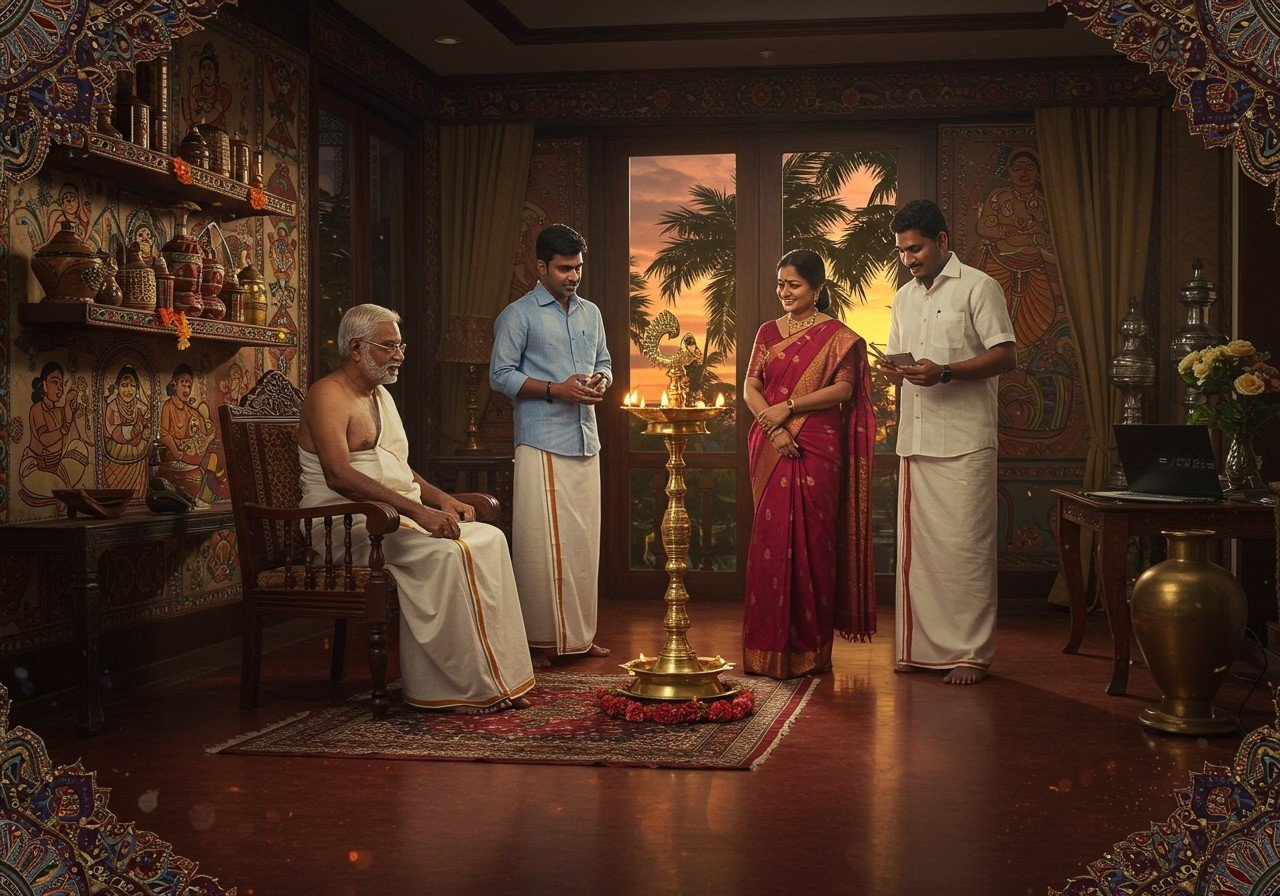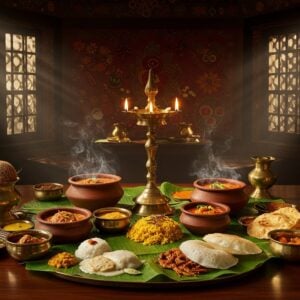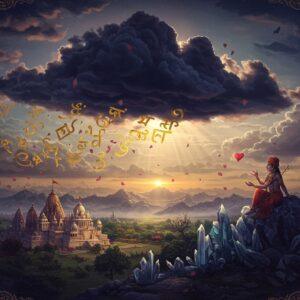
In the vibrant cultural landscape of Kerala, the Ezhava community holds a significant place, continually evolving and redefining their identity. As we step into 2025, understanding the nuances of their traditions and social dynamics becomes crucial. This exploration delves into the intricacies of Ezhava gothram, tharavad, and sub-castes, offering insights for those who value cultural heritage.
Understanding Ezhava Identity in 2025
The Ezhava identity is deeply rooted in historical narratives that have shaped their social fabric over centuries. From a warrior class background to prominent roles in agriculture and business, their journey reflects adaptability and resilience. Their historical connection with Ayurveda and their increasing presence in education and politics showcase a community embracing change while honoring tradition. Regional variations across Kerala add further layers to their rich cultural tapestry.
Ezhava Gothram: The Significance of Lineage
Gothram, representing ancestral lineage, is fundamental to the Ezhava community’s social structure. Each gothram connects its members to a shared ancestor, fostering a deep sense of belonging and kinship. This shared heritage influences marriage alliances, with many preferring partners within their gothram to maintain lineage purity. Rituals and family gatherings often center around these ancestral connections, with ancestor worship continuing to be a significant aspect of religious ceremonies. While modern interpretations of gothram may vary, its importance remains, adapting to contemporary societal norms.
Ezhava Tharavad: The Ancestral Home
The tharavad, the ancestral home, stands as a symbol of heritage and continuity. Traditionally following matrilineal inheritance, these homes witness the passing down of property and lineage through the female line. More than just a dwelling, the tharavad serves as a cultural hub, housing family deities and hosting important rituals. Their unique architecture reflects Kerala’s traditional design elements, and many have been transformed into heritage centers, preserving their historical significance. Tharavads continue to play a vital role in understanding Ezhava family ties and cultural practices.
Ezhava Sub-Castes: A Tapestry of Diversity
The Ezhava community’s diversity is beautifully reflected in its various sub-castes, each with distinct customs and traditional occupations. This internal diversity enriches the community’s overall identity. Many sub-castes have experienced socio-economic progress, particularly through education and entrepreneurial pursuits. The interplay between these sub-castes influences community politics and leadership. Despite their unique characteristics, a shared cultural and religious foundation fosters unity amongst them.
Tradition and Modernity: A Balancing Act
Tradition plays a central role in the Ezhava community, with customs and practices passed down through generations. However, the winds of modernity have brought about significant changes, particularly in urban areas, where traditional practices are often reinterpreted. Technology and online platforms have become instrumental in connecting the Ezhava diaspora, fostering cultural exchange beyond geographical boundaries. Educational advancements empower the younger generation, broadening their participation in diverse professions. The Ezhava community strives to balance tradition with modernity, preserving their cultural heritage while embracing the opportunities of progress.
How Poojn.in Supports Ezhava Cultural Practices
Poojn.in recognizes the importance of preserving cultural heritage. We offer a range of authentic ritual items, including Kusha grass (also known as Darbha), essential for various Ezhava religious ceremonies. You can find:
- Pure Kusha/Darbha grass bundles: Sourced with utmost care and prepared according to traditional methods, these bundles are ideal for your puja needs.
- Traditional Kusha Asanas (ritual sitting mats): Handcrafted with authentic Kusha grass, these asanas provide a sacred and comfortable space for your prayers and meditations.
- Complete puja kits with Kusha grass and other essentials: For added convenience, we offer complete puja kits containing everything you need for a traditional Ezhava ceremony, including high-quality Kusha grass, incense, and other essential items. Explore our Kusha Asanas and discover our range of incense sticks to enhance your spiritual experience.
Poojn.in offers pan-India home delivery, ensuring convenient access to these traditional items. Our commitment to authenticity is reflected in our meticulous sourcing and quality checks. For personalized assistance or bulk orders, contact us at 03369029784 or via WhatsApp at 9476142738. Our knowledgeable team understands the significance of these items in Ezhava traditions and provides expert guidance. Secure packaging ensures the sanctity of your purchases during transit.
Conclusion
The Ezhava community embodies a beautiful blend of tradition and modernity. The connections of gothram, the sanctity of tharavad, and the diversity of sub-castes contribute to their rich identity. As they navigate the future, their respect for heritage combined with an openness to progress ensures a vibrant and inspiring legacy for generations to come.
FAQs on Ezhava Identity and Social Structure
What is the significance of Ezhava gothram?
Ezhava gothram signifies clan or lineage, essential for tracing family roots and upholding traditional practices. It connects individuals to their ancestors, strengthening community bonds.
How does Ezhava tharavad function in society?
The tharavad, the traditional joint family system, plays a pivotal role in Ezhava society, supporting cultural preservation and social cohesion across generations. It serves as a cornerstone of their social structure.
Are there different Ezhava sub-castes?
Yes, the Ezhava community encompasses various sub-castes, each with its own unique customs and traditions, contributing to the richness of their cultural heritage. These sub-castes represent a spectrum of practices within the community.
Why is understanding Ezhava identity important?
Understanding Ezhava identity fosters appreciation for their history, cultural contributions, and resilience. It allows us to acknowledge their unique place within Kerala’s diverse social fabric.
What are some traditional Ezhava rituals?
Ezhava rituals, deeply rooted in cultural heritage, mark significant life events like weddings and births, reflecting their spiritual beliefs and community values. These ceremonies connect them to their past and future.
How has Ezhava social structure changed recently?
In 2025, the Ezhava social structure showcases a dynamic interplay of tradition and modernity. Online platforms and increased access to education play a role in cultural preservation and social mobility. This adaptation allows them to connect globally while preserving local traditions.
What role does religion play in Ezhava identity?
Religion is integral to Ezhava identity, shaping their customs, festivals, and daily life. It provides a spiritual framework and moral compass for the community.
How can one learn more about Ezhava history?
Community records, oral traditions, and scholarly articles offer valuable resources for understanding Ezhava history. Exploring these sources unveils the community’s evolution, struggles, and achievements. You can also explore other articles like Vaikom Temple Festivals: A Guide to Utsavam Celebrations and Exploring Kerala’s Sacred Triangle: Ettumanoor, Vaikom & Kaduthuruthy Temples for more information.


